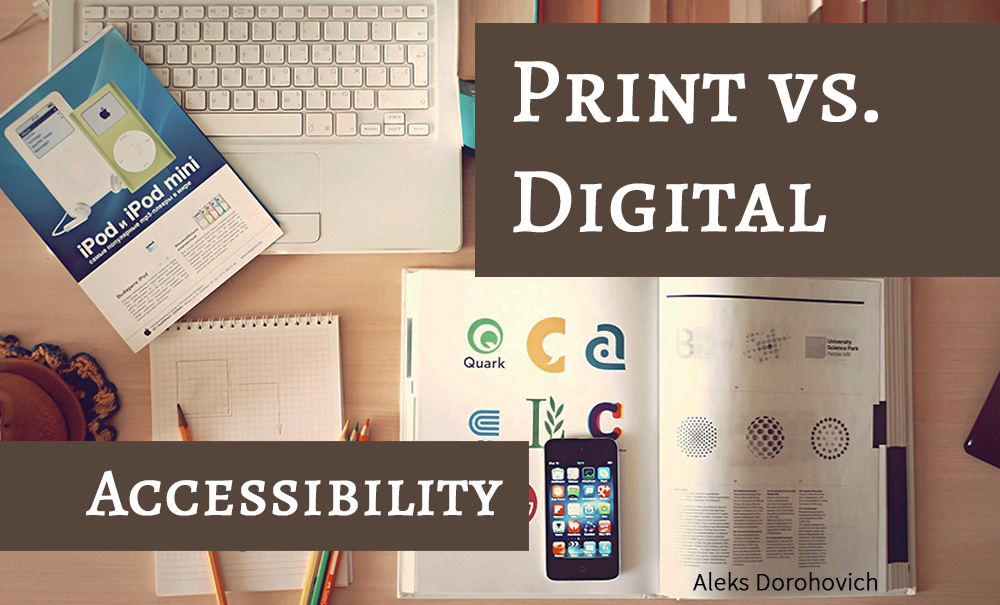The Practical Differences between Digital and Print Design

 Nowadays, we live in a digital world. Most people have a smartphone, and access to technology is more common than ever. But print is far from dying out and still has worthwhile benefits for use. Print design differs from digital design. The more we understand the differences between them, the more we can get out of their unique strengths.
Nowadays, we live in a digital world. Most people have a smartphone, and access to technology is more common than ever. But print is far from dying out and still has worthwhile benefits for use. Print design differs from digital design. The more we understand the differences between them, the more we can get out of their unique strengths.
Digital Versus Print Design
Digital design involves presenting information in an eye catching, visual way to an audience via screens and technology, while print design is meant for display on physical pages. Digital design focuses on mediums such as websites, PDFs, and digital ads. You can find print design on brochures, magazines, print ads, and other similar materials.
The difference between the two doesn’t just include the types of mediums used. There are several different elements in each to be mindful of when you want to effectively relay information through each format. You should keep in mind the differences between these two forms of design. Their differences are important considerations for a designer before the design work starts.
User Interaction
An obvious way that print design differs from digital design is that can be interacted with physically. Unlike an online PDF or website, a brochure or magazine can be flipped through, rotated, and otherwise viewed in all sorts of angles. This allows for print materials to display information in ways that digital mediums can’t.
For example, a physical flyer can have print on both the front and the back, which allows for readers to have direct access to more info at once. This can’t be said for digital media where only one page of information can be displayed at a time, requiring the user to scroll or link through the pages to find whatever information they may need.
There are so many elements to print design, like positioning, size, and order of pages, to name a few. Digital design largely involves uniform single pages displayed one at a time, which can be resized to the user’s needs.
General Usability
Although in many cases you can pick up and take away print media, it does not offer the depth of information you can find through digital media.
Digital media has a wide range of different tools such as menus, search bars, hyperlinks to additional resources, and other elements that can aid users in finding what they are looking for online.
One major thing to consider for website design is making sure that information is laid out in a way that is easy for users to find quickly. Poorly arranged web pages can get users lost when they search, so use accessible design and layout of content. This challenge is unique to digital design and doesn’t exist in print media.
Connect and Understand
There’s a difference in the way that users engage with physical and digital media respectively. On average, while digital media is viewed and understood faster than physical media, it is the physical media that retains viewership longer. Viewers will spend more time reading a physical piece of media and will have a stronger emotional reaction to it.
Accessibility
One downside to print media is a lack of available accessibility tools. While there are many tools that aid people with disabilities in accessing content, those tools are limited when it comes to print media. Those viewing digital media have access to tools like screen readers, closed captioning, and magnification software, which can make things easier for those with disabilities. While there certainly are accessibility tools that can be used on print media, they are nowhere near as easy to get and use as those that can be used digitally.
Plain Language Principles
Writers and designer should think about plain language principles for both digital media and print media. Content should be written for the target audience and the key information should be easy to find no matter what form of media is being used. The content should be understandable and the user should know what to do after they have read the content.
Conclusion
Both print and digital design have advantages, disadvantages, and unique qualities. They are distinct design formats that require different skills. A print designer will have learned and studied different things than a digital designer, and vice versa. It’s important to see them as separate design formats so that their strengths and weaknesses can best be accounted for when putting media together.
Some design agencies specialize in either digital or print. Some, like our very own Accessibrand, have designers who are trained in both areas. Our team of designers can ensure that your work looks good and displays information well. We also will make sure that all accessibility guidelines for both media forms will be followed – and that is definitely not something most design agencies can do.
| TAGS |
